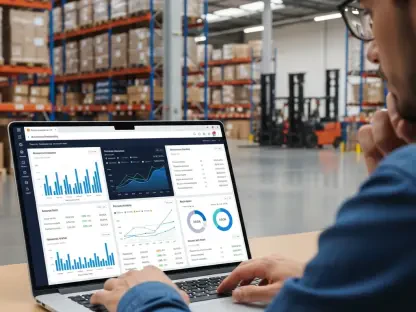I’m thrilled to sit down with Rohit Laila, a veteran in the logistics industry with decades of experience spanning supply chain and delivery. Rohit’s passion for technology and innovation has positioned him as a thought leader in transforming fleet management through cutting-edge solutions. Today, we’ll dive into the evolving landscape of fleet risk management, exploring how strategic collaborations and advanced technologies are enhancing safety, boosting efficiency, and promoting sustainability for fleets across the UK. Our conversation will touch on the power of AI-driven tools, the financial and competitive benefits of data-driven operations, and the future of proactive risk mitigation.
How did the idea of leveraging technology partnerships come about in addressing fleet risk management challenges?
The concept really stemmed from a growing recognition that traditional approaches to fleet risk management were no longer enough. Fleets face complex challenges like driver safety, rising operational costs, and regulatory pressures. A few years back, it became clear that technology—particularly AI and connected platforms—could provide real-time insights to tackle these issues head-on. The idea of partnering with tech innovators emerged from a shared goal to make advanced tools accessible to fleets of all sizes, helping them proactively manage risks rather than just reacting to problems after they occur.
What specific benefits do fleets gain from adopting advanced risk management technologies?
Fleets see a wide range of advantages, starting with improved safety. Technologies like AI-powered dash cams can detect risky behaviors—think distracted driving or harsh braking—and provide immediate feedback to drivers through in-cab coaching. Beyond safety, there are significant cost savings through optimized routes that cut fuel expenses and streamlined workflows that reduce downtime. Additionally, exclusive discounts and referral programs make these tools more affordable, ensuring even smaller fleets can access top-tier solutions without breaking the bank.
Can you explain how AI-driven tools, like dual-facing dash cams, are transforming driver safety?
Absolutely. Dual-facing dash cams are a game-changer because they monitor both the road and the driver in real time. The AI behind them can pick up on specific behaviors—say, if a driver is looking at their phone or not keeping a safe following distance. When that happens, the system can alert the driver instantly with audio cues or warnings, helping correct the behavior on the spot. This kind of immediate intervention reduces the likelihood of accidents and fosters a culture of accountability and safer driving habits over time.
In what ways do connected platforms enhance operational efficiency for fleet managers?
Connected platforms bring a level of visibility that fleet managers could only dream of a decade ago. They allow for smart route planning, which analyzes traffic patterns and distances to minimize fuel consumption. On top of that, these platforms can track vehicle usage and maintenance needs, preventing costly breakdowns by scheduling repairs before issues escalate. By automating and optimizing these processes, fleets can slash operational expenses and keep their focus on delivering goods or services without unnecessary delays.
How are these technologies helping fleets address sustainability goals?
Sustainability is a huge priority, and technology plays a pivotal role here. Platforms now offer tools to track emissions in detail, giving fleets a clear picture of their carbon footprint. They can use this data to identify inefficiencies—like idling or suboptimal routes—and make adjustments. Additionally, these systems support the shift to electric vehicles by providing insights into charging needs and battery performance, making the transition smoother. It’s all about giving fleets the data they need to make greener choices without sacrificing performance.
I’ve heard of impressive results, like a 40% reduction in accident-related costs for some fleets. Can you walk us through how technology drives those kinds of outcomes?
That kind of result comes from a combination of proactive safety tools and actionable insights. For instance, fleets using AI dash cams can identify and address risky driving patterns before they lead to accidents. Features like incident detection allow managers to review footage and coach drivers on specific improvements. Over time, this reduces collision rates, which directly cuts repair costs, downtime, and even insurance premiums. It’s a ripple effect—safer driving leads to fewer incidents, which in turn saves money and keeps operations running smoothly.
How do these advancements provide a competitive edge for fleets in today’s market?
In a crowded market, standing out often comes down to efficiency and reliability. When fleets adopt these technologies, they not only improve safety but also lower their insurance costs due to reduced risk profiles. That financial savings can be reinvested into growth or passed on to customers through competitive pricing. Plus, demonstrating a commitment to safety and sustainability can attract clients who value responsible partners. It’s a win-win—fleets save money and build a reputation as forward-thinking operators.
How does a data-driven approach enable fleets to proactively manage risks rather than just react to them?
The beauty of a data-driven approach is that it shifts the focus from damage control to prevention. With real-time data from connected platforms, fleets can spot potential risks—like frequent harsh braking or areas with high accident rates—before they become serious issues. This allows managers to intervene early, whether through driver training or route adjustments. On the insurance side, having access to this data means partners can offer tailored support, like risk assessments or premium adjustments, to help fleets stay ahead of challenges.
What is your forecast for the future of fleet risk management technology?
I’m incredibly optimistic about where this is heading. Over the next few years, I expect AI and machine learning to become even more sophisticated, predicting risks with greater accuracy and personalizing solutions for individual drivers or routes. Integration with other emerging technologies, like autonomous vehicles, could further revolutionize the space. Sustainability will remain a key driver, with more tools focused on zero-emission goals. Ultimately, I see fleet management becoming a fully connected ecosystem where data empowers every decision, making operations safer, cheaper, and greener than ever before.









